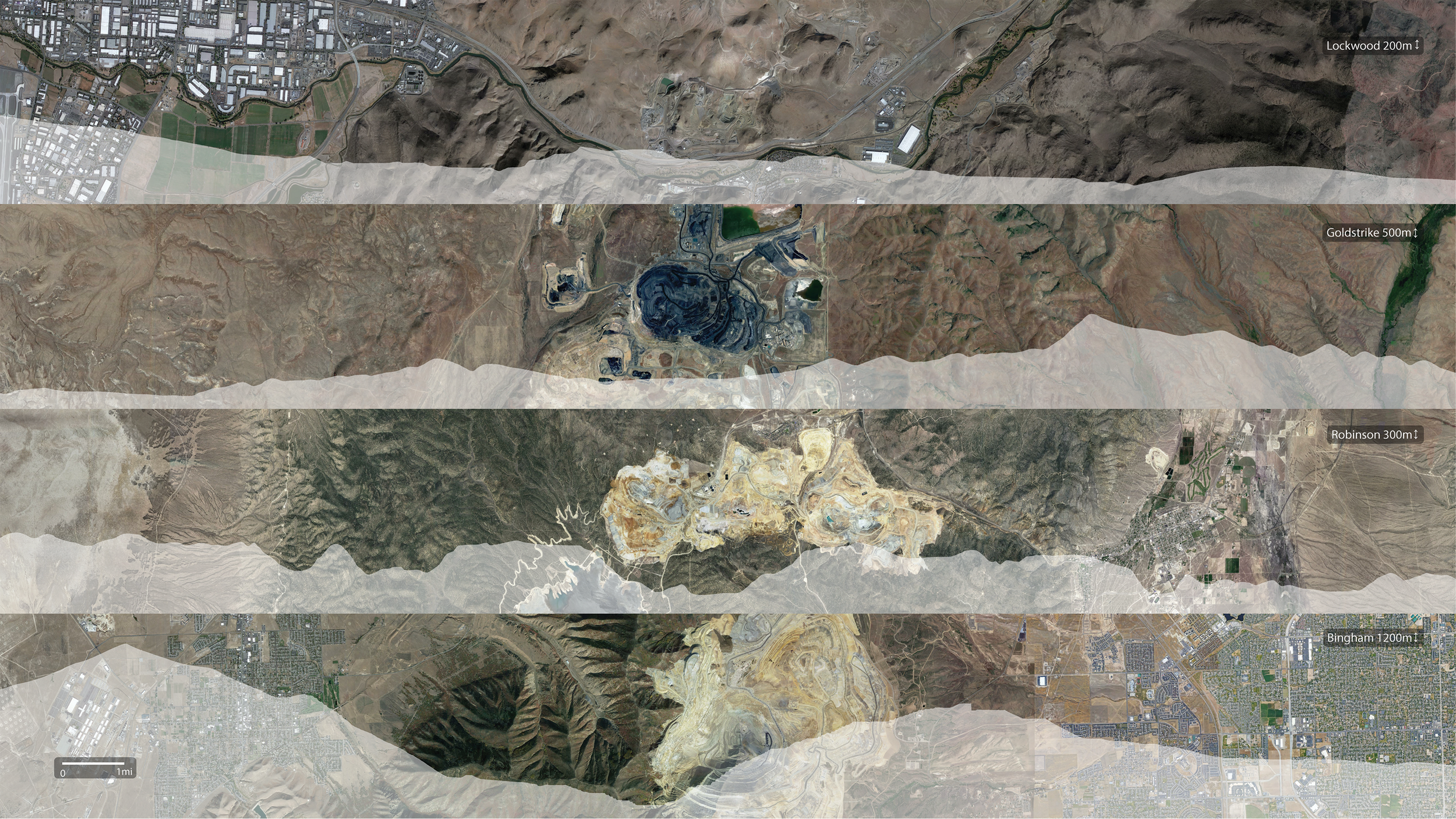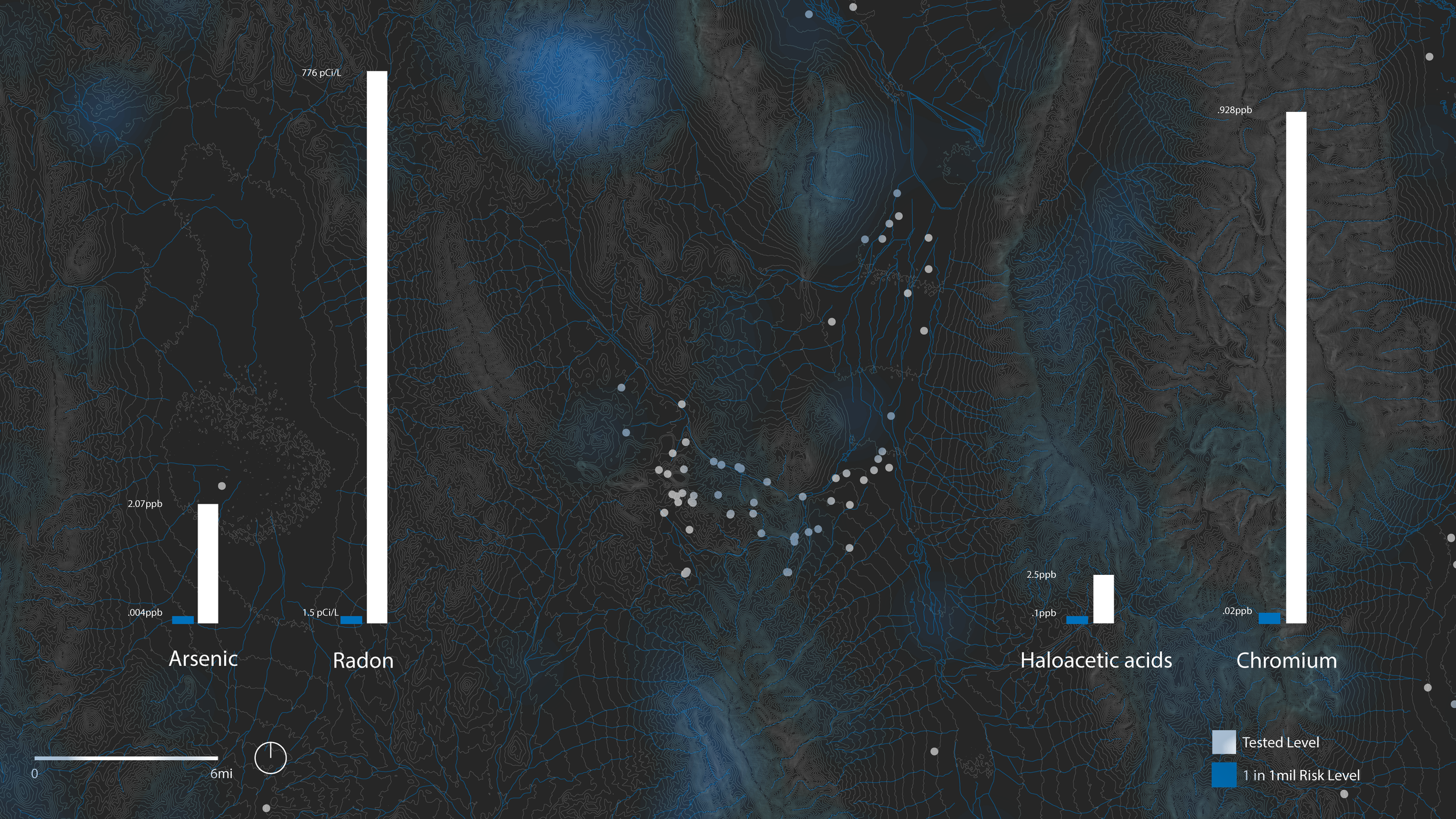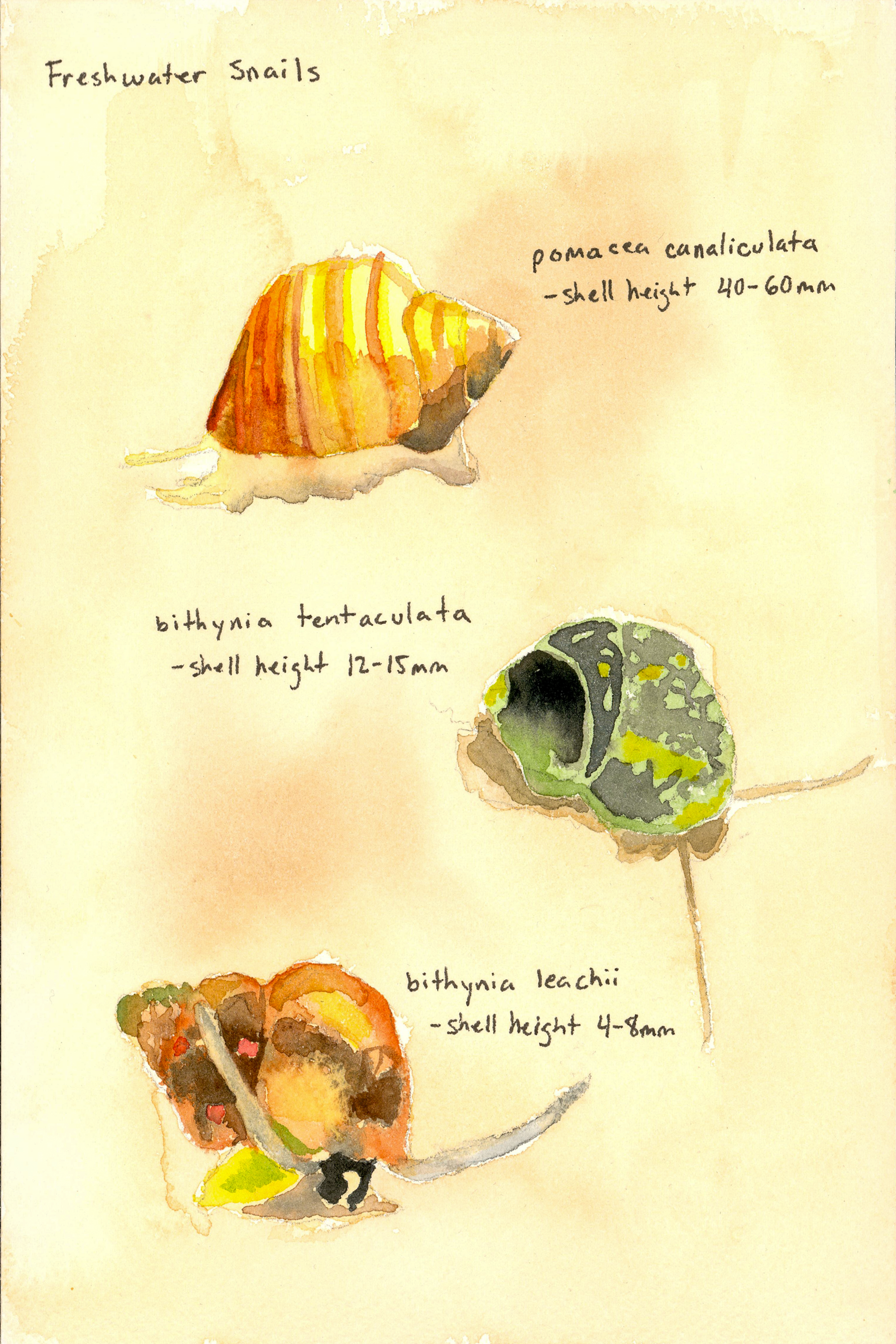Reservoirs of Potential
Open pit mines leave gaping craters in their wake, and are especially common in states like Nevada, whose economy is especially reliant on mining.
Their expanse only partially comes through in aerial imagery, but cutting sections through the terrain reveals the extreme depths to which many of these mines are dug before being abandoned and made someone else’s problem.
The city of Ely and the town of Ruth were historically mining towns, Ely existed as an outpost on the Pony Express and Ruth was established as a company town for the White Pine Copper Company.
They owe their existence to mining and water.
Most people here get their water from springs, shown here in blue as a heat map. The proximity of the springs to the mine make this location uniquely suitable for human habitation, however the long and destructive legacy of mining means that it is not only the land that remembers the decades of extraction, but the water as well.
The water here, with testing locations shown as white dots, has high levels of arsenic radon, halo-acetic acids and chromium. All well above safe levels that correspond to a 1 in 1 million cancer risk.
The residents of Ely and Ruth also remember. Robinson mine has been one of the longest operating mines in the U.S. and residents of Ely and Ruth curate and archive their history as mining towns with care even as they resist new plans to expand the pits which could interrupt the flow of water at Murry Springs, their main source of water.
In the future, when the Robinson mine has been depleted and abandoned, water and mines will operate not as adversaries but as a means of responsibly facilitating the green energy transition.
Closed-loop hydro storage is a low-tech, low material alternative to the massive lithium-ion or lead-acid battery arrays which would otherwise be a necessity.
As the water rises, small buoys equipped with sensors will measure temperature - turbidity - Ph - and dissolved oxygen concentration over time.
Fog nets, woven from copper filament and supported by wooden piles, will stand over the reservoirs that this system creates, and will serve as indices of temporality and memory.
Ruth and Ely, with their history in the copper mining and forging industry, can provide the facilities and expertise for fabricating the mesh and fittings. The local sourcing and manufacturing of these nets will hopefully serve as another layer of connection between the people and the mine.
As water evaporates from the surface of the reservoirs, it will slowly condense on the surface of the mesh. Once the droplets are large enough, they will run down the mesh toward the wooden piles. Spiraling channels carved into the piles will guide the distilled water past mounted planters irrigating them in the process.
Robinson mine will naturally fill with groundwater over a 30-year period. The nets and the habitats they support will change over time as well, gradually being covered in algae, developing a patina, and hopefully becoming homes for birds, snails, plankton, and pennywort.












